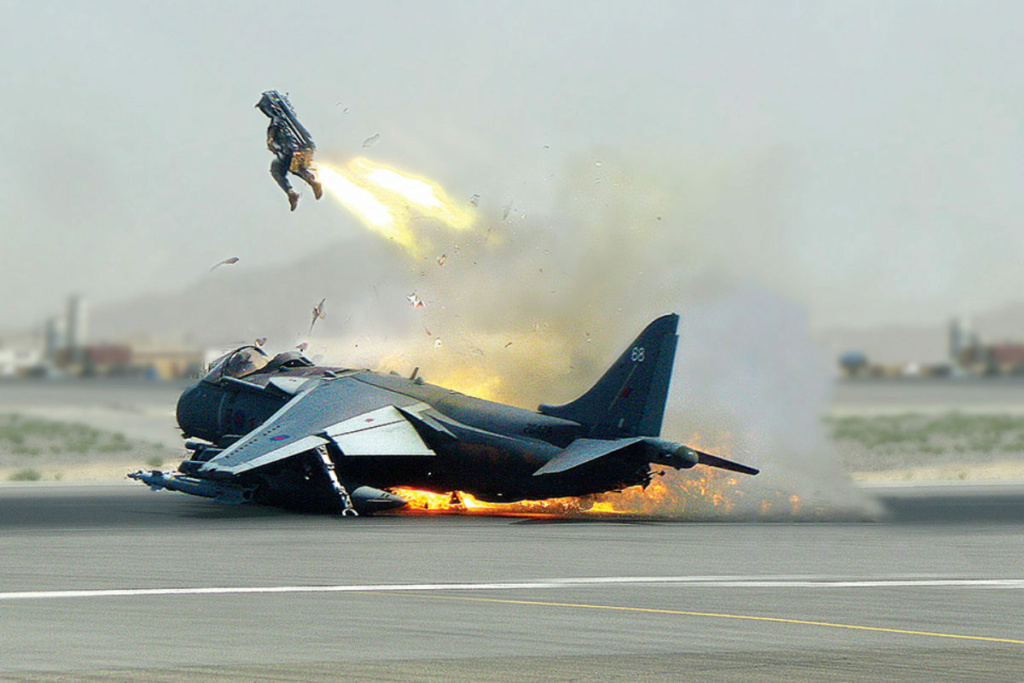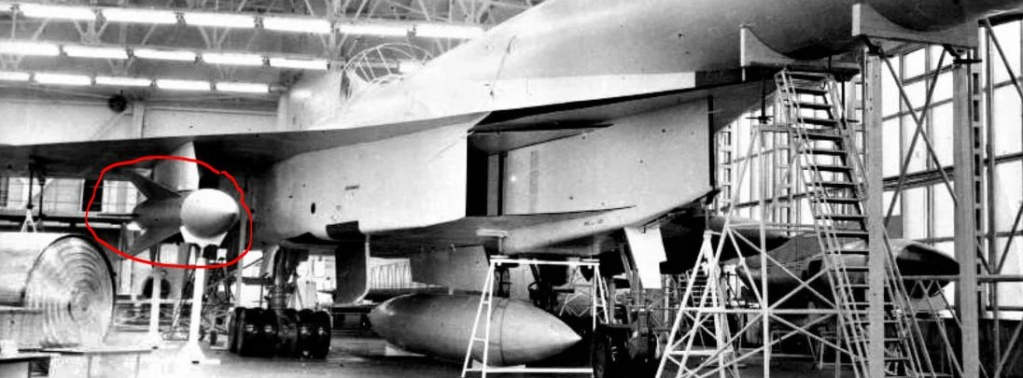A small initial batch of Yak-41M's was to be built for the Navy which included 2 Yak-41MU's as well. The resulting accident was a big blow to the program however.
And they were going to eventually be deployed on aircraft carriers that didn't happen either, but plans are plans and reality is reality... there is no evidence any tooling was set up let alone any production started.
It was still in a testing stage.
See preliminary drawings from Yefim Gordon's book of the Yak-41M - it looked rather different than the prototypes with much improved stealth features. >>
But they could draw anything at all though couldn't they?
The tooling for the standard design was not built, so how could they then make stealthy designs where dimensions and angles and materials are critical?
And then you would have to flight test it to see how it effects flight performance, which likely was not done either.
I suspect if it had gone ahead they would have built some testing models like the originally already flown model and then created a few of the stealthy models and tested them aerodynamically in secret to determine the changes if flight performance and characteristics... a bit like MiG did with the MiG 1.42 and MiG 1.44.
Compared to the flying prototype >>
Ironically it looks like the reverse of the MiG-29 and the Su-27... when these projects were first mentioned in the west they needed images, but they didn't have any, so they got artists to draw some and what they basically did was take the MiG-21 and other old designs and modify them to the known design choices that the new aircraft had, so twin engine, twin tail fin planes but without the blended lifting body design.
The flying Yaks look like the drawings based on previous generation fighters... boxy... and angled... but not in a useful stealthy way... and then these drawings are like they are drawing them the way they would need to look to be aerodynamic and stealthy.
That final design image looks interesting... the much larger tail fins, but they have clearly reduced the size of the fuselage to reduce frontal drag... the bulge at the ventral area shows the size of the main engine and presumably a ventral weapon bay...
On its own it would need to be supersonic, but as the low part of a high low fighter paring say with an Su-57K then they could make it much chunkier with more fuel.... give up the supersonic capacity, and create more internal volume for fuel and internal weapon bays.
I would dare to say that the Mig-25, Mig-31, Su-27, F-16, SR-71 and even the Mirya were some of the most remarkable planes ever! (Small sample)
Is that because of their records or because of their performance in service?
Well you've certainly come a long way!
Overall I don't think they were worth it... they were not cheap, but they were also not F-35 expensive, and they left service before they could be found out in terms of combat usefulness... but if the Russian Navy thought they and their replacement Yaks would deliver what they promised they sure did invest a lot in navalised MiGs and Sukhois...
The whole point of VSTOL fighters is to be able to save money on carriers... every ship in the fleet with a helicopter pad can become an aircraft carrier... so why waste money on actual aircraft carriers at all... a few shipping container ships with their decks empty and you have an aircraft carrier super cheap... when you are not using it as an aircraft carrier you can use it as a container ship... except when it is carrying aircraft as an aircraft carrier it will also need to carry fuel tanks for thousands of tons of aviation fuel and of course ordinance that the aircraft will be using, which means modifications so it isn't a standard container ship any more really... and conversion might take so long it just isn't worth it.
Sort of like the whole VSTOL premise... sounds good, but when you actually do it it doesn't make sense and doesn't work properly.
No. What it's actually telling me is that the "dog shit" was much more reliable than the "cat shit" - despite western propaganda!
The Indian attrition rate proves that beyond any doubt.
If you look at the British and American attrition rate and fatalities it gets even worse but as you've mentioned they were far more active in actual wars. Nevertheless many pilots were lost.
So attrition of both types was very high... part of that would be conflicts and the experimental nature of the aircraft, and operating at sea is not always easy as a moving landing pad complicates things too, but at the end of the day they are fragile and have a high loss rate compared to more conventional types...
Quite right about the T-4 but the missile was the Kh-45 specially developed for the T-4. It was a superb aircraft and the first in the world with Fly-by-Wire controls. Both the plane and the missile were quite remarkable but got cancelled, however the T-4 laid much of the technical groundwork for the superb Su-27.
Experience with the T-4 led to Tupolev to push for Mach 2 bombers instead of Mach 3 or faster which was the fashion of the time.
Most people back then thought by now we would be flying at mach 5 or faster.
Cartoons like Roger Ramjet told kids that was what the future would be like.
Reality is that there is a huge penalty to flying very fast in a very big plane and that is enormous fuel consumption if you are not using suitable engines (scramjets).
on a Su-33, it can be recalled/retargeted before release; a ship-launched weapon can't.
Do you mean it can be retargeted after launch?
The ship launched models operate in wolfpack mode so up to 8 would be fired and one would climb to 300m to scan for targets and the rest would fly to the target area at below 7m... the lead missile would determine which targets would be hit by which missile normally.
They might have planned to allow the aircraft to perform the role of the lead missile so it climbs and monitors the targets and sends target information to a low flying missile, but most of the drawings I saw showed the air launched version operating in a high altitude flight profile which massively improves flight range ( from 120km for the surface launched model to over 300km for high altitude launch and flight)... simply because the missile flies faster at higher altitude and the thinner air is easier to push through at altitude than at sea level.
Instead of flying below the 7m altitude limit of Standard SAMs used on AEGIS cruisers, the Moskit was supposed to fly above their ceiling like the Kh-32 does.
[quote]But the Chinese integrated them on their Su-33 counterpart while their CV escorts also have dozens of AshMs.[/quoet]
I have seen them fitted at static displays at air shows... by the time China got their Su-33s working they would already have Yakhont missiles which are much lighter, though not any shorter... and also faster and longer ranged... it would make little sense for China to adapt the Moskit to Su-33 launch when the better performing Yakhont is about half the weight and with much better range and better speed... Moskit is about 4 tons and Yakhont is about 2.5 tons...
then, perhaps those 2 could be integrated on Su-33 &/ MiG-29Ks?
The Su-33 could probably carry two or maybe three Yakhonts and full fuel if the carrier it was operating from had catapults.
Without cats maybe reduced fuel load and one Yakhont (about 2.5 tons) and then inflight refuelling after takeoff to full fuel load would work.
But for anti ship work in real war Yasens with Zircons would make more sense.
Let the carrier focus on the air defence of the surface ships... that is their primary role.
All of those types of missiles could also be modified for ground attack & it would make sence to integrated them on carrier borne fighter-bombers.
Yes, they do have ground attack capacity and could easily be carried by the Tu-22M3.








